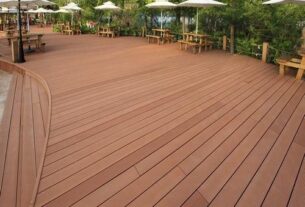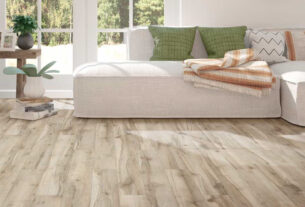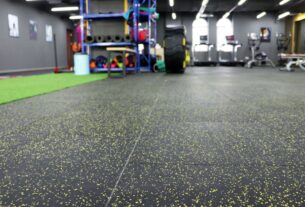Introduction
Flooring is a crucial element in interior design, influencing both aesthetics and functionality. Among the many flooring options available today, SPC flooring (Stone Plastic Composite) has emerged as a top choice due to its durability, affordability, and ease of maintenance. This article delves into the key features, advantages, Flooring Dubai and maintenance tips for SPC flooring.
What is SPC Flooring
SPC flooring, or Stone Plastic Composite flooring, is a type of rigid core vinyl flooring that combines limestone powder, polyvinyl chloride (PVC), and stabilizers to create an ultra-durable, waterproof material. It features a multilayer construction that enhances its strength, making it a preferred choice for both residential and commercial applications.
Structure of SPC Flooring
SPC flooring typically consists of the following layers:
Wear Layer – A transparent top layer that provides protection against scratches, stains, and daily wear and tear.
Vinyl Layer – A decorative layer that mimics the appearance of natural wood, stone, or tile.
SPC Core – The rigid core made of stone and plastic composite, offering excellent stability, waterproof properties, and impact resistance.
Backing Layer – Often equipped with an attached underlayment for sound absorption and additional comfort.
Advantages of SPC Flooring
Durability and Strength
SPC flooring is highly durable, thanks to its stone-plastic composite core. It resists dents, scratches, and wear, making it ideal for high-traffic areas such as kitchens, hallways, and commercial spaces.
100% Waterproof
Unlike traditional hardwood or laminate flooring, SPC flooring is completely waterproof. This makes it suitable for moisture-prone areas such as bathrooms, laundry rooms, and basements.
Realistic Appearance
SPC flooring replicates the look and texture of natural materials like wood and stone, offering an elegant aesthetic without the high maintenance requirements.
Comfort and Sound Absorption
The built-in underlayment provides cushioning underfoot and reduces noise, making SPC flooring a comfortable and quiet option for homes and offices.
Easy Installation
Most SPC flooring products feature a click-lock system, allowing for quick and hassle-free installation without the need for adhesives or nails.
Low Maintenance
SPC flooring requires minimal maintenance. Regular sweeping and occasional damp mopping keep it clean and in good condition.
Eco-Friendly Option
Many SPC flooring products are manufactured with non-toxic materials and low levels of volatile organic compounds (VOCs), making them safe for indoor air quality.
Installation Process
Installing SPC flooring is straightforward and can be a DIY project if you follow the right steps. Here’s a step-by-step guide:
Prepare the Subfloor
Ensure the subfloor is clean, dry, and level.
Remove any debris or dust that might interfere with the installation.
Acclimate the Flooring
Leave the SPC planks in the room for 24–48 hours before installation to allow them to adjust to the temperature and humidity levels.
Plan the Layout
Determine the direction of the planks for an optimal aesthetic.
Measure the space and cut planks accordingly.
Start Laying the Planks
Begin in one corner and work your way across the room.
Use the click-lock mechanism to secure each plank in place.
Maintain an expansion gap of at least 1/4 inch around the perimeter to allow for natural movement.
Finish the Installation
Install baseboards or moldings to cover expansion gaps.
Clean the flooring to remove any dust or debris.
Maintenance Tips for SPC Flooring
To keep SPC flooring in top condition, follow these simple maintenance tips:
Regular Cleaning – Sweep or vacuum daily to remove dirt and dust.
Damp Mopping – Use a damp mop with a mild cleaning solution to maintain shine and cleanliness.
Avoid Harsh Chemicals – Do not use abrasive cleaners or wax-based products.
Protect Against Scratches – Use furniture pads and avoid dragging heavy objects across the floor.
Control Moisture Levels – Although SPC flooring is waterproof, excessive water accumulation should still be avoided.
SPC Flooring vs. Other Flooring Options
SPC vs. WPC (Wood Plastic Composite) Flooring
SPC is more rigid and dense, offering better durability.
WPC is slightly softer underfoot, making it more comfortable but less impact-resistant.
SPC vs. Laminate Flooring
SPC is 100% waterproof, whereas laminate is water-resistant but not waterproof.
SPC has a stronger core, making it more stable and durable.
SPC vs. Traditional Vinyl Flooring
SPC is thicker and more durable than traditional vinyl.
SPC has a more realistic look and feel compared to standard vinyl sheets.
Conclusion
SPC flooring is an excellent choice for homeowners and businesses looking for a durable, waterproof, and stylish flooring option. With its easy installation, low maintenance, and impressive performance, it is quickly becoming a favorite among flooring solutions. Whether you’re renovating a home or designing a commercial space, SPC Flooring Dubai provides the perfect blend of functionality and aesthetics.





